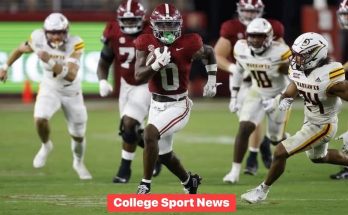In the highly competitive world of professional rugby league, player movement between clubs is a constant and often complex process, shaped by numerous factors such as salary caps, individual career ambitions, team strategies, and market dynamics. Recently, the spotlight has shifted dramatically onto the National Rugby League (NRL) landscape following a significant signing that has sent ripples throughout the competition. A prominent rival club has successfully secured a standout talent from the Brisbane Broncos, a move catalyzed largely by the Broncos’ pressing salary cap squeeze. Simultaneously, this development comes amid intriguing uncertainty surrounding a key player from the Cronulla Sharks, who has made a consequential decision about his future with the club. This interconnected narrative exemplifies the broader realities and intricacies of modern professional rugby league, illustrating how fiscal constraints and strategic career decisions intertwine to shape team compositions and competitive balance.
The Broncos, a club with a proud history and a deep connection to Queensland’s rugby league heartland, have been under increasing pressure to manage their player roster within the tight confines of the NRL’s salary cap regulations. The salary cap, designed to promote parity and prevent wealthy clubs from hoarding talent, inevitably forces clubs into difficult choices — deciding which players to retain, who to let go, and where to invest their limited resources for the greatest on-field impact. In this particular instance, the Broncos found themselves in a position where retaining all their top-tier talent was financially unviable. As a result, one of their star performers became available on the market, drawing attention from rival clubs eager to capitalize on the Broncos’ cap squeeze.
The rival club that swooped in to sign the Broncos’ talent represents a strategic masterstroke in squad building. Securing a high-caliber player not only boosts their immediate on-field competitiveness but also sends a powerful message across the league about their ambitions and capability to attract elite talent. Such signings are often the culmination of meticulous scouting, negotiation, and timing, as clubs seek to identify players whose skills and experience align perfectly with their tactical systems and future plans. The acquisition of this Broncos star will inevitably alter the balance of power, forcing other clubs — including the Broncos themselves — to reassess their strategies in an increasingly cutthroat environment.
This transfer saga gains further complexity when viewed alongside the ongoing situation at the Cronulla Sharks. The Sharks have long been known for nurturing strong squads capable of challenging for premiership honors, with a roster that blends emerging young talent and seasoned veterans. However, one of their standout stars has recently made a decisive call on whether to re-sign with the club or explore opportunities elsewhere. This decision carries significant implications not only for the Sharks’ roster stability but also for the wider market, as it may trigger a domino effect of player movements and contract negotiations.
From a player’s perspective, the choice to stay with a current club or seek new horizons is influenced by a variety of factors, including the promise of on-field success, financial remuneration, personal lifestyle considerations, and relationships within the club environment. Players weigh the certainty of a familiar setting against the allure of fresh challenges and potential career advancement. For the Sharks’ star in question, the deliberation likely involves assessing the club’s direction, coaching philosophy, and the opportunities for individual development and leadership roles. This personal decision-making process unfolds amid the backdrop of broader club strategies and league-wide salary cap constraints, making each contract renewal or departure a carefully navigated juncture in a player’s career.
The salary cap itself remains a central theme in this narrative. Introduced to maintain competitive balance across the NRL, the salary cap restricts the total player payments a club can make in a season, compelling teams to be judicious in their contract offers and squad compositions. While the cap promotes parity, it also introduces a layer of complexity in talent retention and acquisition, particularly for clubs with a rich pool of high-performing players. For the Broncos, the cap squeeze necessitated difficult decisions, potentially leading to the departure of valued players despite their contributions on the field. Conversely, rival clubs with cap space or more flexible financial arrangements can seize the opportunity to enhance their squads by targeting players who become available under such constraints.
In the context of the Broncos’ situation, the departure of a star player is not merely a loss of individual talent but also a challenge to the team’s cohesion and future planning. Integrating new players to replace key departures requires adjustments in playing style, leadership dynamics, and team culture. The club’s management and coaching staff must therefore balance immediate performance goals with long-term development objectives, ensuring that the squad remains competitive while nurturing emerging talents. Such transitions highlight the multifaceted nature of team building in professional sports, where financial management, player welfare, tactical innovation, and club identity all converge.
From the rival club’s standpoint, acquiring the Broncos star is a strategic coup that can invigorate their season prospects. This move can inject fresh energy, experience, and skill into the squad, potentially filling gaps or elevating the team’s overall performance ceiling. Moreover, the signing can serve as a catalyst for further recruitment, attracting other players who wish to join a club on an upward trajectory. The psychological boost from landing a marquee player should not be underestimated, as it can galvanize existing squad members and fans alike, fostering a renewed sense of ambition and confidence.
Turning back to the Cronulla Sharks, the star player’s decision regarding re-signing is pivotal. Should the player choose to remain, it signals continuity and stability, allowing the club to build around a proven performer and potentially leverage that stability in attracting complementary signings. On the other hand, should the player opt to leave, the Sharks will face the challenge of replacing a key contributor and recalibrating their squad to maintain competitiveness. The club’s recruitment and contract strategy will need to adapt swiftly, perhaps turning attention to nurturing younger talents or targeting the transfer market for suitable replacements.
This unfolding scenario also highlights the broader labor market dynamics within professional rugby league. Player contracts, trades, and signings are subject to a delicate interplay of market forces, individual aspirations, and club objectives. Players with proven ability and versatility tend to attract strong interest, especially if they become available due to salary cap pressures or contract expiration. Clubs continuously monitor such players to bolster their ranks, but must navigate the salary cap, contract length, injury histories, and cultural fit to make informed decisions. This environment creates a dynamic and sometimes unpredictable marketplace where both clubs and players must exercise strategic acumen.
Furthermore, this episode underscores the importance of effective communication and negotiation in player movement. The Broncos’ management had to make transparent yet tactful decisions about their roster changes, while the rival club’s recruitment team would have engaged in detailed discussions with the player’s representatives to secure the signing. Similarly, the Cronulla Sharks’ handling of their star’s contract talks will require a balance of persuasion, patience, and pragmatism, ensuring that both player and club interests are addressed.
For fans and observers, these developments offer a fascinating glimpse into the operational realities behind the scenes of professional rugby league. Beyond the thrilling on-field action lies a complex web of strategic planning, financial management, and personal decision-making that collectively shape the narrative of each season. Understanding these dynamics enriches appreciation of the sport and highlights the multifaceted challenges faced by clubs striving for success amid stringent financial and competitive conditions.
The salary cap squeeze experienced by the Broncos also prompts reflection on the broader policy implications within the NRL. While the cap aims to level the playing field, it can sometimes place traditional powerhouses in difficult positions, forcing them to part with loyal and high-impact players. This tension raises questions about the optimal balance between fiscal constraints and competitive sustainability, inviting ongoing dialogue among league administrators, club executives, players, and fans. Potential reforms or adjustments to cap rules could influence future player movements and club strategies, underscoring the dynamic nature of the league’s governance landscape.
In the immediate term, the Broncos will need to leverage their remaining resources wisely, perhaps focusing on developing promising young talent or optimizing their existing squad’s performance through tactical innovation and strong team culture. Meanwhile, the rival club’s successful signing places them in a favorable position to challenge for higher honors, provided they can integrate the new player seamlessly and maintain squad harmony.
Simultaneously, the Cronulla Sharks’ handling of their star’s contract decision will be closely watched, with outcomes likely influencing their trajectory in the upcoming seasons. Whether the player re-signs or departs, the club’s response in recruitment, player development, and strategic planning will be critical to sustaining competitiveness.
This interconnected narrative highlights the increasingly professionalized and strategic nature of rugby league in Australia. Clubs operate not merely as sporting teams but as complex organizations balancing business imperatives, player welfare, community engagement, and on-field success. Player movements, especially involving marquee talents, are emblematic of this multifaceted environment, reflecting the interplay of individual ambitions, financial realities, and strategic visions.
In conclusion, the recent signing of a Broncos star by a rival club amid a salary cap squeeze, coupled with a Cronulla Sharks star’s pivotal re-signing decision, offers a compelling case study in the dynamics of modern professional rugby league. It illustrates how fiscal pressures, market opportunities, and personal choices converge to reshape club rosters and competitive landscapes. For the Broncos, this represents a challenging but not insurmountable moment requiring strategic adaptation and resilience. For the rival club, it is an opportunity to bolster their competitiveness and assert their ambitions. For the Sharks, the outcome of their star’s contract deliberations will significantly influence their future prospects. Collectively, these developments enrich the tapestry of the NRL, providing insights into the complex and ever-evolving world of professional sport where financial management, talent acquisition, and individual aspirations continually intersect.



